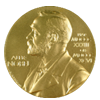2nd Internatonal Conference on Quantum Engineered Sensing and Information Technology
June 29-July 02, 2026
Telecom Paris, Paris, France

Recent advancements in Quantum Science and Technology have significantly surpassed expectations, positioning quantum-based solutions at the forefront of addressing critical societal challenges in the 21st century—including those in telemedicine, secure communications, and intelligent systems. Among these technologies, Free-Space Optical (FSO) communication has emerged as a vital enabler for ultra-high-speed, multi-gigabit-per-second (Gb/s), large-capacity data transfer. By utilizing laser-based signal carriers, FSO Laser Communications (Laser-Com) deliver secure, high-bandwidth, wireless, line-of-sight connectivity between remote locations—offering a transformative alternative to traditional RF-based communication. In the era of data-intensive applications and global connectivity, the explosive growth of internet and multimedia services is straining existing telecom infrastructures. Infrared (IR) laser transmitters are now being explored as a low-risk, high-reward upgrade path—providing unmatched bandwidth, low power consumption, small form factor, and enhanced resistance to interception compared to conventional RF systems. Simultaneously, emerging quantum-enabled fields such as spintronics, neuromorphic engineering, and quantum materials are redefining the design of next-generation electronic and photonic devices. These technologies utilize the quantum properties of particles—such as spin, entanglement, and superposition—to go beyond classical device limitations and introduce entirely new paradigms in computation, sensing, and communication. While nature offers us a rich palette of atomic elements, it is quantum engineering that allows us to rearrange these building blocks in novel, intelligent ways to create functional materials and devices not found in nature. Nowhere is this more evident than in semiconductor quantum structures, where atoms from the periodic table are combined with atomic precision to create materials with engineered optical, electronic, and spin properties. Advanced material growth techniques—guided by first-principles simulations and precision atomic layering—are now enabling the realization of quantum devices engineered atom-by-atom. These include high-performance photonic structures capable of converting electrical energy into coherent light or detecting photons across an ultra-wide spectral range, from deep ultraviolet (DUV) to terahertz (THz) (0.2–300 microns). Furthermore, seamless integration of these devices with Silicon Photonics platforms opens the door to scalable, CMOS-compatible quantum technologies for real-world applications. This historic conference will spotlight cutting-edge breakthroughs and future trends in quantum sensing, photonics, and nanoscale engineering. It will showcase how a deep understanding of quantum systems—inspired by nature but designed beyond it—is enabling humanity to develop powerful tools to not only coexist with, but harness, the forces of nature.



 01
01

Banjamin Franklin Award (2018)
 02
02

Nobel Prize in Physics (1985)
 03
03

Nobel Prize in Physics (1973)


Nobel Prize in Physics 2007


Nobel Prize in Physics 2007


Nobel Prize in Physics 2007


Nobel Prize in Physics 2007


Nobel Prize in Physics 2018


Nobel Prize in Physics 2019


Nobel Prize in Physics 2022









1. Topological Materials (e.g., topological insulators and Weyl semi-metals)
2. 2D Van der Waals materials (e.g. Graphene, TMDCs, 2D magnets)
3. Carbon-based Materials
4. Antiferromagnetic Materials (e.g., Non-collinear Ferromagnets, Ferrimagnets, Skyrmions)
5. Nano-Photonics, Metamaterials, Active Plasmonics
6. Nano-Structured and Functionalized Surfaces
7. Phononic Materials
7. 8. Spin-orbitronics
9. Multiferroics
10.Superconducting Oxides
Submit Abstract Now1. Semiconductor Quantum Detectors
2. Semiconductor Quantum Cascade Lasers
3. Quantum Dots Devices
4. Wide-bandgap Solar-blind Photodetectors & Focal Plane Arrays
5. Terahertz Emitters and Receivers
6. Terahertz Nano-Photonics and Nanoelectronics
7. Single-photon Counting Detectors and Biosensing
8. Bio-Electronics and Bio-Photonics
9. Spintronic Gigahertz to Terahertz Sources and Detectors
10. Magnetic Memory and Logic Devices
11. Topological Spintronic Devices
12. Quantum Memories
13. Magnonic Devices
14. Nano-antenna Devices
15. Valleytronic Devices
Submit Abstract Now1. Quantum Spectroscopy
2. Nonlinear and Ultrafast Optical Phenomena
3. Materials characterization (Optical, Electrical, Magnetic, Structural, etc.)
4. Near-Field Optics and Flat Optics
5. Light-Matter Interaction at the Nano-Scale
6. Quantum Optical Measurements and Decoherence Effects
7. Novel Magnetic Microscopy Techniques
8. Magneto-Optics
9. Quantum Sensing
Submit Abstract Now1. Micro-and Nano-Fabrication Technologies
2. Heterogenous Integration Technologies
3. Photonic Bandgap Structures and their Applications
4. Neuromorphic Devices, Circuits, and Systems
5. Unconventional and Approximate Computing
6. Magnonics Applications
7. Integrated Photonics for Quantum Sensing and Quantum Imaging
8. Quantum Communications and Applications
Submit Abstract Now